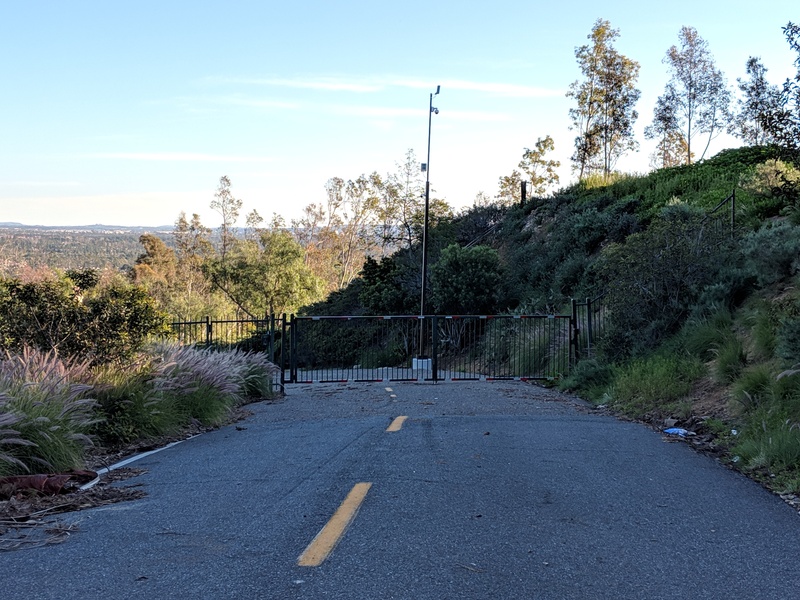It’s interesting how well earth, water, air and fire map to solid, liquid, gas and plasma. People recognized the four states of matter, but for ages they interpreted them as ingredients instead of structure.
Tag: history
Plural of Eclipse
For a lot of reasons, we didn’t arrange another road trip to see today’s total eclipse like we did in 2017 (which was amazing, by the way!). It was only partial out here in California, and not even with as high a magnitude as the one last October.
But we had clear skies, so we broke out the eclipse glasses from 2017 again. After testing them first by looking directly as a bright indoor lamp to make sure there were no scratches. And I’d heard that colanders make interesting patterns (each hole works as a pinhole camera) much like overlapping leaves do, so I brought that out — as you can see, it worked quite well!
I do kind of regret not being able to get out to see this one as total. Partial eclipses can be really cool, especially if you have multiple ways to observe them, but XKCD has a point. There really isn’t any comparison to experiencing totality, and it doesn’t come through very well in photos.
I bet northern Spain is already booked for 2026.
It is interesting to think that solar eclipses happen every year — usually twice! — but they’re not always total, and they’re only visible from a small part of the planet at a time. And sometimes that’s a slice of, say, Antarctica or Siberia or out in the middle of the ocean. Not rare for the planet, but definitely rare for any given location.
On one hand, it’s no wonder people used to see them as omens. With travel and communication slow (and in many cases impossible) in the ancient world, if you’re only going on what’s been seen in your area, it seems super-rare and unpredictable. On the other hand, cultures with sophisticated enough astronomy like the ancient Babylonians were able to calculate the eclipse cycle thousands of years ago!
One bit of funny timing: We’ve been catching up on the last season of The Magicians. Today we got up to an episode that…well, let’s just say the moon figures very prominently in it!
Update: Axios posted a nice map last week showing how fully booked AirBnBs are for the day in different parts of the US…which shows the path of totality *very* clearly!
Lost Cities and Alien Skies
You wouldn’t think that books about astronomy and archaeology would have a lot in common, but Four Lost Cities (Annalee Newitz) and Under Alien Skies (Phil Plait) pack some odd similarities.
Both are about places we (mostly) can’t visit in person: Faraway planets in one case, the distant past in the other.
We have to piece together parts of the experience from what has come to us through time or through space: Telescopic observations, space probes, spectral analysis, and our understanding of physics — ruins, artifacts, aerial surveys and
what we know about people (both contemporary and in general).
For some sites we have very detailed and solid information: Angkor’s stone temples are still standing. Pompeii was well-preserved under volcanic ash and we still have first-hand writings about the city and its destruction. Mars and the moon have been extensively surveyed, including multiple landers and photographs from the surface. (And, in the case of the moon, a handful of people!)
Others require a lot of speculation: There’s a solid core of what we’ve figured out about Cahokia, but a lot of unknowns that we can sorta-kinda extrapolate from the histories and tales of surviving tribes in the area — but only to a point. Similarly, we know the rough structure of the TRAPPIST-1 solar system and some of its planets, but we have to speculate: if one of the planets in the habitable zone actually is habitable, what conditions would that require?
Both include major discoveries made within the last decade: Pluto and Charon were just a pair of dots until the New Horizons mission flew past it in 2015, bringing us pictures and measurements and so much data it took months just to download it from the probe back to Earth. Lidar surveys at Angkor in 2012 revealed the foundations of a vast metropolitan area around the temple complexes, upending our sense of how big the city was and identifying new sites to investigate.
It’s kind of funny how I read them so close together. Synchronicity and all that. They’re also both good (see also my review of Four Lost Cities and review of Under Alien Skies), and I’d definitely recommend them!
Looking Back at Camp Myford

I’ve been looking through photos from back when we could, you know, go places and found a set from the hills above North Tustin during a year that we got enough rain to turn the hills green. There were some really clear shots of Peters Canyon, Saddleback, and even some south Orange County hills that I couldn’t identify. There was a spot that I remember being a turn-out that’s finally eroded away to the point that it’s been fenced off.
And there was this gate, which I think might have been across the road to Camp Myford, a Boy Scout camp on the Irvine Ranch that closed back in the late 1980s. I remember working as a camp counselor for a Cub Scout day camp during the last month — possibly the last week — it remained operating, before the bulldozers came in.
I remember lots of eucalyptus trees, hiking trails and dirt roads, a couple of buildings (though I couldn’t tell you what was in them), a fire ring, and a whole lot of giant pipes that were going to become the sewers and storm drains of the housing tract that was going to be built any moment now. And I remember being told in no uncertain terms that we were supposed to watch our language around the impressionable younger boys (who were, of course, a lot more foul-mouthed than we were).
And I found this article through the Tustin Area Historical Society, summarizing the history of the canyon as far back as the Mexican Rancho system, when it was named Cañon de las Ranas (Canyon of the Frogs) because it drained into the Newport Back Bay, known then as the Marsh of the Frogs.
Peters Canyon was once Canyon of the Frogs
Camp Myford, an Irvine Co. gift to the Orange County Council Boy Scouts of America, was named for James Irvine’s youngest son. Peter’s Canyon Regional Park offers a well-used oasis of wilderness amid the sprawl of development in the North Tustin area…
Recent Links: Geography, Internet and Comics
A few interesting links that I’ve been meaning to post for a while now.
Geography and History
- Live map of wind patterns across the continental US. Someone linked to this during Hurricane Sandy. It’s still fascinating to look at.
- How fast could you travel across the U.S. in the 1800s? Great maps showing how far you could get from New York in a given time period in 1800, 1830, 1857 and 1937 as faster and faster transportation became available.
Using and Building the Internet
- Warren Ellis has given up on Facebook and Google+ because it’s just so hard to reliably reach or listen to people. Think of how many posts in your news feed you miss each day just by not being online at the right time, never mind the pre-filtering Facebook does to the firehose.
- Page Weight Matters – an engineer at Google led an effort to cut Youtube’s bandwidth requirements by a factor of ten. Strangely enough, when they started a live test, average page load time went up. It turned out that people on low-speed connections had found out about it and started using it even though it took two minutes to load where they were…because even that was still better than the 20 minutes they’d been stuck with before. (Via Raymond Camden)
- If you run an email newsletter, keep in mind that many of your readers will try to read it on a phone. Keep that in mind when designing your format. Giant images with no text aren’t going to be too helpful.
- How to keep electronics going when you lose power for days: Generators, batteries, car chargers, solar or kinetic chargers, etc.
Comics
- Some of the earliest UNIX daemon art was drawn by none other than Phil Foglio of Girl Genius fame.
- Saturday Morning in Front of La Salle De Justice is a painting by Rey Taira in DC Comics’ gallery show, inspired by Seurat’s famous painting Sunday Afternoon on the Island of La Grande Jatte (the painting at the center of Sondheim’s Sunday in the Park with George), but recast with the Justice League and other DC Comics heroes. It’s making the rounds again now, but I first saw it on Firestorm Fan a few months back.
Origins of Unix
IEEE Spectrum article on The Strange Birth and Long Life of Unix.
This was an interesting read, especially for the cloak-and-dagger tactics they had to resort to not only to create the OS in the first place, but to do things like distribute bugfixes (because management was afraid that distributing bugfixes would be considered “support”). Literally on the level of “go to the mailbox on such-and-such street after 2pm.”
(Rescued from my Google+ archive)
Sequencing the Black Death
A few years back, while I was reading Eifelheim, I found myself curious about the timeline of the pandemic and read up on the Black Death. There was an idea floating around at the time that, based on descriptions of the symptoms and spread of the disease, the black death might have been caused by a viral hemorrhagic fever like Marburg, not by the bacteria that causes the bubonic plague that’s still endemic in some parts of the world. Since then, researchers have managed to extract bacterial DNA from the bones of Londoners who died when the plague reached the city in 1348, confirming that they were infected with a relative of the modern plague…and have reconstructed its genome. It’s virtually identical to the modern form.
Wow.
